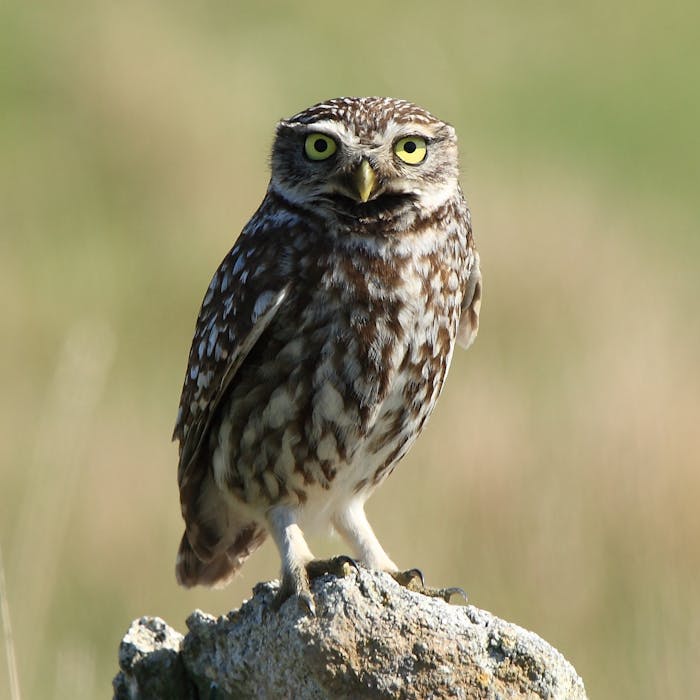
Little Owl - brought to Britain and flourished, but now in danger
Introduced into the UK in the 1870s, the diminutive little owl has flourished here, and can now be seen along hedgerows, on farmland and in parkland across England and Wales. It often perches on a pole or rock, looking out for its unsuspecting prey.
The Little Owl (Athene noctua), also known as the owl of Athena or owl of Minerva, is originally from the temperate and warmer parts of Europe, Siberia, Korea, and North Africa. It was successfully introduced to Britain by two landowners: Col. E.G.B.Meade-Waldo at Stonewall Park, near Edenbridge in Kent (in 1874), and the 4th Lord Lilford at Lilford Hall, Oundle in Northamptonshire from 1889.
It is our smallest owl, not much bigger than a Song Thrush, with a flat-topped head, a plump, compact body and a short tail. The plumage is greyish-brown, spotted, streaked and barred with white. The Little Owl can frequently be seen in the daylight, and will bob its head up and down when alarmed. In flight, it has long, rounded wings, rapid wingbeats and flies with a slight undulation.
Its diet consists primarily of crickets, grasshoppers and other invertebrates such as beetles and earthworms, as well as small mammals. Small birds are also taken during the breeding season.
Initially, the Little Owl was welcomed in the UK. However, during the early 20th century, game rearers had unfounded concerns that the Little owl could be taking large numbers of their pheasant and partridge poults. An extensive Little Owl Food Enquiry was conducted by Alice Hibbert-Ware in 1936 and 1937; Alice concluded that Little Owls mainly took invertebrates and small mammals. They very rarely took young game birds. Little Owls were removed from offshore islands as there were concerns that they were predating Manx Shearwater and Storm Petrels at their breeding colonies in Pembrokeshire. Otherwise, they appear to have filled a vacant niche in the UK.
Little Owls may reach an age of about 16 years, but normally do not live that long. They are often hit by vehicles when hunting at night. Severe winters with a lot of snow may also lead to huge losses in some populations.
Breeding Bird Survey data suggest that little owl numbers are now declining quite rapidly.
Further reading
Links to external websites are not maintained by Bite Sized Britain. They are provided to give users access to additional information. Bite Sized Britain is not responsible for the content of these external websites.
